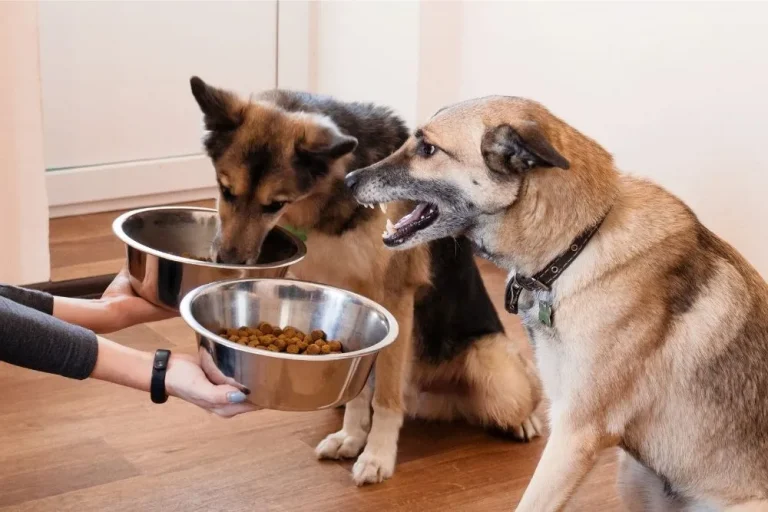When you bring a new puppy home from the breeder, you should be given a puppy pack, which will contain a range of items to help your new best friend settle into their forever home. One item every breeder will include is a supply of the dog food that your pup is currently eating.
This food is what they’re eating right now, but it doesn’t have to stay that way. Many dog owners choose to change their puppies onto a new diet, but it needs to be done properly.
Abruptly moving your dog onto a different brand or type of food can cause them serious harm, especially at a young age. So, you need to make sure that the change is gradual and that you help your dog to enjoy their new food.
Here are some practical tips to help you find the right technique to change your dog’s food over quickly but also safely.
Find The Right Dog Food
Before you move your puppy to a new diet, you need to make sure you do your research and find a brand and food type that will give them all the nutrients they need. With so many options on the market, it’s important to read ingredient lists and understand what makes a high-quality diet. Look for foods that list a named meat (like chicken or salmon) as the first ingredient instead of ‘animal derivatives’ and aim for options with whole, natural ingredients. Avoid vague terms like “meat meal” or artificial preservatives, as these can indicate poor quality food that won’t give your puppy the nutrients they need to grow up big and strong. If you’re unsure about the right food for your new puppy, then speak to your vet during a check-up, as they can advise you on what your dog needs and help you understand the language on dog food labels. Putting in the work to explore all the options will help you find a nutritious, well-balanced dog food your pup will thrive on.
Know How Much To Feed Your Pup
As a growing animal, your new pup will need a lot of nutrients and energy. Underfeeding a puppy at a young age can have lasting repercussions for their health, so make sure you feed them the correct amount. Puppies need different amounts of food at different stages of growth, so you’ll need to be prepared to adjust your portions as they grow. If you’re considering moving them onto a new diet, for example, from dried food to raw dog food, then you’ll need to use a raw dog food calculator to work out exactly how much to feed them. These online tools will allow you to input specific details about your pup, such as how old they are, so you can know what to feed them at what age. Each puppy is different and will have unique needs, so if you’re unsure, speak to your vet to ensure your puppy gets enough nutrients from their food.
Take Things Slowly
As mentioned, it’s key that you transition your puppy onto a new diet slowly to avoid causing digestive issues or excess stress. The new food should be introduced gradually over the course of between 5 days and a week. Start by mixing a small amount, around a quarter, of the new food with their current food, and slowly increase the ratio of new to old food each day. This gives their digestive system time to adjust to their new diet. Some dog food brands offer advice on how to move your dog from one type of food to another, so review these guidelines as well, as they may give you specific measurements that are tried and tested by other dog owners.
Monitor Your Puppy’s Bathroom Breaks
As the owner of a new puppy, you’ll be used to spending a lot of time teaching them how to go outside to do their business. During the transition to a new food, it’s important that you take a look at their stool, as this can be a clear sign of digestive health issues. You need to learn what a healthy dog poo should look like so that you can quickly spot signs of any issues. Generally, dog mess should be chocolate brown in colour and firm but not too hard. It should come out like a log and contain no blood. Loose stool or diarrhoea could be a clear indicator that the food switch is happening too quickly. Slow down the transition if this occurs and book them an appointment with the vet if it continues to be an issue.
Be Patient
Moving your puppy from one brand of dog food to another can take time and effort. It can take 2-3 weeks or longer for some puppies to fully adjust to a new food, so don’t be discouraged if they don’t gobble it up straight away. Go slowly and give your pup time to get used to both the taste and feel of their new food. Eventually, you can move away from their old brand of dog food and give them their new diet for every meal.
To Sum Up
Overall, it will take time to move your dog onto a new brand or type of food, and while this might seem like a lot of effort, it’s an important step. Switching your puppy to a new food is something that needs to be done with care to set them up for a great future. If you follow the steps outlined in this article, then you should be able to enjoy a smooth transition, but if you’re ever in any doubt or concerned that your puppy isn’t adjusting, contact your vet. They can advise you on the best course of action and ensure that your puppy remains healthy and happy on the right diet.







